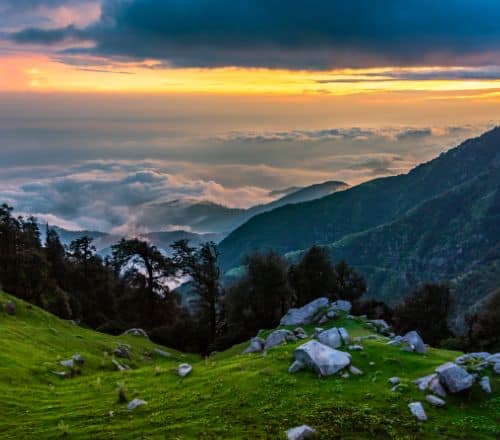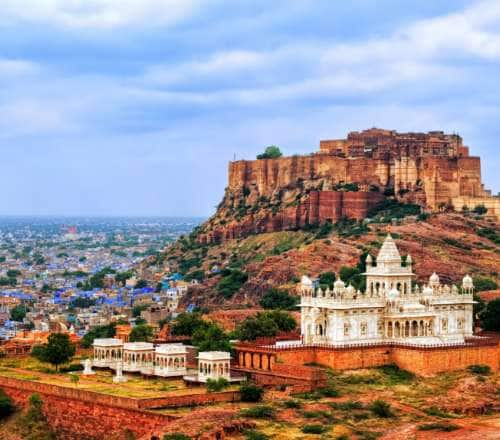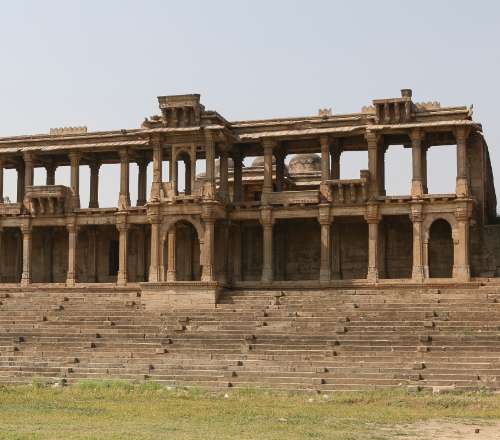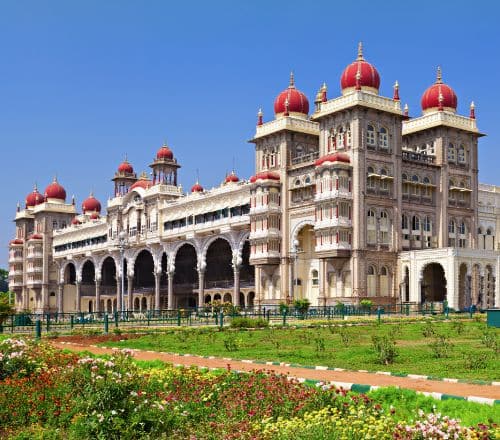Stay logged in to proceed with bookings, orders and offers.
On changing the terminal, you will loose items in your cart. Are you sure you want to change your terminal?
Discovering the unique religion of Donyi-Polo in Arunachal Pradesh
The sun rises pretty early in the northeastern corner of India. Determined, I stood outside my room before the first ray of the sun could light up the million dew drops on the grass, beneath my feet. I knew that Siyom river was calling me. Without wasting time, I made my way to the river via the dust-ridden state highway. Standing on the river bank, eye-to-eye, I was finally viewing the mighty Siyom.
A thick layer of mist had rolled over the river and two boatmen waded through it, watchfully, against the backdrop of a desolate yet beauteous landscape. A beautiful morning was about to begin. But the rhythm of human life had already found its tempo.
I captured the fishing rituals of the anglers with my camera. The mist had slowly begun to disappear. I knew that in a few more minutes the sun would rise and my photographic eye flitted around looking for a new muse. And just then, like with the Siyom, an unfathomable yet familiar sensation tugged me towards a place I had never been to before. I just knew somehow…the vistas that await me would be magnificent and tantalising, and as though the universe was sending mystical signs, my heart pounded faster.
An orchard of oranges stood right across an emerald inlet formed by the Siyom. Looking from afar, it appeared to be dotted with thousand specks of tangerines. I once had a childhood fantasy of running across a field of oranges and it felt like an unreal moment was knocking on my door. Thanking heavens, I went about innocently plucking oranges from the orchard. And then it dawned on me that my feet were grounded in a part of the world not many people knew about.
I saw four youngsters on their way to school. I can't say who had the most exciting encounter _ the locals seeing a traveller or the traveller seeing the locals. I felt sociable and made the first move by asking them what they were up to.
Consequently, they asked me about my story. Patiently, I told them about the circumstances that brought us together in Aalo, a small town in the West Siang district of Arunachal Pradesh. I was visiting from the national capital New Delhi, about 2500 kilometres away. The journey wasn't short. A flight to Guwahati, another one to Pasighat, and then a shared taxi to Aalo. I reached here a day ago late in the afternoon. As it was hot, I told them how I decided to begin my excursion only today.
Curious to know what they watched on TV, I asked them about their habits of content consumption. They told me how Korean content had made its way into their everyday life. They also explained to me why the Arunachalis speak better Hindi than their counterparts from the northeastern states. We talked about many topics but what caught my attention was their religion.
Two of the four teenagers told me that they follow Donyi-Polo. I had the bare minimum idea of their religion, so I asked them to share everything about their beliefs. Here is what I could learn from the interaction:
Donyi-Polo is an ancient animistic religion. Guided by the elements of nature, it derives its name simply from the sun and the moon. In the Tani language of Arunachal Pradesh, Donyi means the sun, a female deity. Similarly, Polo means the moon and is a male deity. Both these deities occupy a significant space in the folklore of Donyi-Poloism.
Various tribes have their own beliefs and mythological tales that inform their religious worldview. As per the Minyong and Padam tribes of Arunachal, the universe is manifested in the physical body of the nature god Sedi. Trees and plants are the hair of Sedi; rains and oceans, his tears; rocks and stones, his bones; and the sun and the moon, his two eyes.
Sedi watches the world through Donyi and Polo, his two eyes. These universal eyes oversee all actions of living beings. Followers of Donyi-Polo are the children of the sun and the moon. They keep a note of their good and bad deeds. One doesn't need to read scriptures or perform rituals to be a true follower of Donyi-Poloism. They must be true to themselves and perform actions of gratitude and service.
The religion of Donyi-Poloism finds meaning in introspection and righteousness. The omnipresent Nature-god also rewards and punishes humans for their actions. They judges them in the day through Donyi and in the night through Polo.
Donyi-Poloism doesn't concern itself with the afterlife. If the followers are on the righteous path of community service and generosity, Sedi rewards them through happiness. Sedi disregards acts of crime, injustice, discrimination, and selfishness. He infuses sadness into the lives of those engaging in evil acts. Hence, one must help sustain harmony and peace to enjoy the favour of the Nature-god.
The mythological version of the Galo tribe has a minor variation. They believe that all things in nature are formed by the interaction of Melo and Sidi. Melo is the sky and Sidi is the earth. Donyi and Polo were also born when Melo and Sidi came together.
In another folklore, all celestial objects originate from Keyum, the vacuum or nothingness. Though there are variations in these myths, their central theme revolves around nature worship and animism.
Another important religious figure of Donyi-Poloism is Kine Nane. Kine Nane is the goddess of agriculture. She is invoked during the festival of Solung in September. The festival also sees sacrifices made to Dadi Bote (God of domestic animals) for prosperity.
At the border of Indo-China, Arunachal Pradesh lies at the confluence of religions. In the east, Buddhism forms the major religion in Tawang. In the west and south, the tribals have converted to Christianity. As such, keeping their cultural and religious identity was difficult for the indigenous tribes.
In the 1950s, Talom Rukbo, a local leader realised this threat. Giving the local belief a larger identity and recognition required documenting it. Talom helped institutionalise and document the religion. Donyi-Poloism found larger followership and acceptance in the neighbourhood in three decades with his efforts.
I walked through the streets of Aalo in late December. I could see houses marked with white flags with a red sun in the centre. This is the flag of Donyi-Poloism. There were banners announcing events where people could come together for worship.
The religious centre is known as Gangging. The followers come here together to offer silent prayers to the Nature-god. They reflect on their activities and ask for forgiveness through hymns and chants. There are no special idols or objects to offer tribute to. The worshippers make resolutions to themselves to lead better lives.
The people of Arunachal celebrate an important festival in September. Members from the Adi tribe come together for Solung, an agricultural feast. The Adis majorly follow the Donyi-Polo religion and invoke their deities at this time. They spend three days in a cultural extravaganza after sowing the paddy saplings.
The festival follows a mythological tale. Doying Bote, the god of the sky, spread his seeds on Kine Nane, the goddess of the earth. These seeds sprouted in the form of paddy. The ancestors of the Adi tribe helped plant these saplings to feed the people inhabiting the region. The Adis, thus see the union of the sky and the earth as a moment of joy and bliss.
The first part of the festival is called Ardo-Bado. It sees animal sacrifices made to the god of domestic animals, Dadi Bote. The second part involves offering prayers to Kine Nane, the goddess of crops. This ritual is known by the name of Binyat. In the final part of the festival known as Ekop, a religious singer narrates the story of Abotani, a remarkable ancestor of the tribe. Doying Bote is also remembered throughout the festival.
A visual treat of the festival is the Ponung dance. The ladies of the tribe come together to perform this group dance dressed in colourful tribal outfits. The feast is incomplete without delicious pork curry and local rice beer called Apong.
East and West Siang districts of Arunachal Pradesh have the maximum number of people from the Adi tribe. If you are looking forward to enjoying the festival, you may visit Pasighat, Aalo, or Basar town from this region.
My interaction with the locals helped me discover a new religion. A religion that is untainted by capitalistic values. In these times when money has become the religion of many, a few lessons from Donyi-Polo may help us find peace and happiness.





The Adani One expressly disclaims all liability, direct and indirect, in respect to actions taken or not taken based on any or all the contents of this Blog. The Blog is an opinion of the contributor based on the collation of data from various sources and is provided only for information purpose. Adani One does not canvass, advertise, solicit, invite or induct for any product, merchandise, information, brand or any other materials mentioned in the Blog, nor does it obtain any monetary benefit from the same. Reader is advised to read and apply his/her intellect and discretion in this regard. Any Intellectual Property mentioned in this blog belongs to the rightful owner. We do not intent to claim any interest over the same.